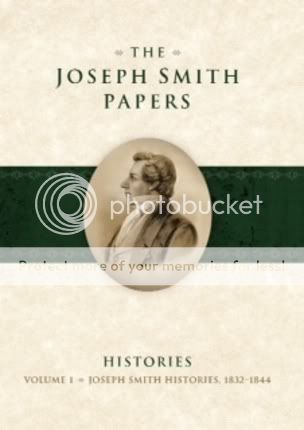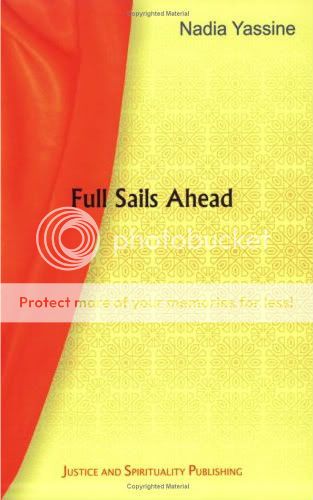What has the “Joseph Smith Papers Project” to do with Islam?
Or, “an ode to invested Latter-day Saint history”
***
Yesterday, various bloggers and writers were invited to a meeting with the editors of the most recent volume of the Joseph Smith Papers Project to discuss the new “Histories” volume. This post is partially a reflection on that event, and you can expect other blog posts and reviews to come.
***
In a revelation dictated on the day of his church’s founding, Smith reported God’s command: “there shall be a record kept among you.”1 And so it was; with various fits and starts the early Saints strove to fulfill what they took to be a divine mandate. Mormon history, from the very beginning, was invested. It was Mormon history. Much of our earliest material was recorded under the dictation, direction or influence of Joseph Smith. It doesn’t take a genius or a meticulous historian to recognize that such records will carry deeply impressed fingerprints of the personalities, prejudices, and perspectives of those doing the recording. And such records are invested.
You might sense a problem with this. We want people to simply tell it like it is, enough cheerleading, tell the truth, lay everything bare. However, I’m suggesting that those who complain loudest about the obviously-partisan nature of official accounts might find it more fruitful to deeply consider the initial impulses behind the records Mormons kept. Why did they record this and not that? What are they focusing on, and what seems to escape their gaze altogether? Invested history won’t often provide distanced, dry, meticulous, disconnected accounts though the stuff from which it is crafted might very well seem less-than-exciting. I’m asking you instead to conceive of our earliest historical accounts with close attention to their context. Such accounts include personal witnesses of spiritual experiences (visions of the heavens, visitations from heavenly beings), shot through with political, economic, and social concerns. Words like “bias” and “objectivity” should give way to words like “perspective” and “values.”
Perhaps this is the grand secret of understanding Mormon history! The records are imperfect—sometimes quite foreign—ranging from the boring to the majestic, encompassing the mundane, the marvelous, and even the over-the-top. And the gaps, oh! those damnable gaps! and the hints at records now lost, probably forever, to the ravages of the moth or flame!
So, what does this have to do with Islam? I recently read an interesting book called Full Sails Ahead by a Moroccan Muslim scholar/activist named Nadia Yassine. Billed as a “frank examination of Islamic history and critical assessment of the relation between Islam and…the past,” the book enacts the author’s understanding of the importance of historical perspective for religious faith. Part of the reason contemporary Muslim countries have witnessed scientific, political, and cultural decline to various degrees is because they are not living true to the best in their history, she argues. And this isn’t entirely their fault, as some of their early recorded history is imperfect. Toward the conclusion of her book Yassine takes a moment to describe the early Islamic “chronicler,” who in the 600s AD recorded a “flat image of the facts”:
It is true that when you read history in the records of the great chroniclers like Tabari, for instance, you feel a certain annoyance before this monotonous delivery of accounts that are not linked by any main theme or historical framework. Fragmented chronicles for a fragmented history!
We thus inherit an accumulation of impersonal accounts of unequal importance yet presented on the same scale of value. In the same detached style, for instance, we are informed that Sukayana…had very beautiful hair and that her father’s head was slit by Yazid Ibn Mu’awiya. Such unflappability, as we might call it, in the face of events produces an uninteresting and impersonal history, wanting in the power of events. So flat and blurred are its accounts that the fleeting periods of time it attempts to capture seem easily interchangeable.2

If the “Journals” volumes represent more of the fragments and scraps of our past, we also have a wealth of early Mormon documents which draw upon that chaos to make order. Yassine complained of the “monotonous delivery of accounts that are not linked by any main theme or historical framework” in early Islamic chronicles. Our early Church made efforts to provide just such a framework, much to our appreciation and despite our ongoing uneasiness with partisan and selective nature of the records. The history they recorded is invested, and we’re glad! Enter the newest volume in the ongoing papers series: Histories, Volume 1: Joseph Smith Histories, 1832–1844.
This new volume presents “the six personal and church histories written, dictated, or closely supervised by Joseph Smith” prior to his death.4 Early Latter-day Saints sought to give explicit narrative shape to their experiences as they understood them. They self-published narratives in Church newspapers, pamphlets and books. Near the end of his life, Joseph Smith provided a narrative overview to Daniel Rupp, who compiled an encyclopedia called An Original History of the Religious Denominations at Present Existing in the United States (Philadelphia, 1844). This account drew on the earlier Wentworth Letter, which in turn drew on Orson Pratt’s “Remarkable Visions” pamphlet, which in turn drew from other accounts. This regress of reference is being untangled as more and more records are being meticulously transcribed and published for the Joseph Smith Papers Project, giving us easier, more intimate, and unprecedented access to our early church history.
While leafing through these records a variety of questions should fill our minds. One prominent question of late goes something like this: “Does this match what I remember being taught in Sunday School lessons and Seminary, or reading in official Church manuals?” The folks who teach your classes, the folks who’ve written various official works, most of them are simply doing their best to inculcate in us a sense of belonging to a divine community, to impress on us the moral obligations such membership entails. When this question (somewhat frequently) returns to nag me I try to situate it alongside other questions which I’ve come to understand to be just as crucial, if not more-so:
Why was this record created? When? By whom? For whom? How was it influenced by other records, and what other records were influenced by it? What is highlighted in this record? What is left out? What do these things tell me about the things this writer valued? Which of my questions are likely to be similar to ones that would have made sense to them? Which questions might they have been asking that I haven’t considered?
These aren’t always the questions we encounter in everyday Church meetings, but they can be valuable, and not merely for historical reasons. These are the sorts of questions I had in mind when I said that words like “bias” and “objectivity” should give way to words like “perspective” and “values.” To paraphrase the grandfather of a young man who was once bitten by a radioactive spider, thus acquiring super-human abilities to swing around tall buildings hanging from webs which he shoots from his wrists, “With great access comes great responsibility”. And I would add, great opportunity. There is power in our history. There is power in history, generally. This is why Yassine’s plea to her fellow Muslims is so heavily-grounded in the Islamic past. This is why she pleads with her people to avoid the dichotomy between either ignoring the embarrassing and inconvenient on one had, or losing all confidence and magnifying the warts on the other:
The perception we have of our history ought to be gathered around a methodological analysis that is likely to give us a meaning, stimulating thus in ourselves a need to find our way back [to those better times] again. The best way to regain the summit is to know the paths of descent.5
Latter-day Saints are a history-loving people, but the history we love best ofttimes is the history we find most comfortable to our 21st century sensibilities. The Joseph Smith Papers Project, that remarkable product of our official Church History department, seeks to place all the cards we have on the table. The “documents created by Joseph Smith or by staff whose work he directed, including journals, revelations and translations, contemporary reports of discourses, minutes, business and legal records, editorials, and notices. The project also includes papers received and ‘owned’ by his office, such as incoming correspondence.”6 Early Mormons were invested; that’s why they wrote this stuff. That’s why the stuff they wrote was permeated by that investment. Present Mormons are invested; that’s why the Church publishes this stuff. That’s why we read this stuff. Remember that the story doesn’t tell itself. From the chaos—be it in the form of handwritten journals, newspaper publications, books, and other materials—historians/readers seek to create a bit of order, to add a narrative scope, to tell our invested Mormon stories.
Footnotes:
1. See Revelation, 6 Apr. 1830, in Doctrine and Covenants 46:1, 183 ed. [D&C 21:1]. Dean C. Jessee, Mark Ashurst-McGee, and Richard L. Jensen, eds. Journals, Volume 1: 1832–1839, vol. 1 of the Journals series of The Joseph Smith Papers, edited by Dean C. Jessee, Ronald K. Esplin, and Richard Lyman Bushman (Salt Lake City: Church Historian’s Press, 2008), xxxv.
2. Nadia Yassine, Full Sails Ahead (Iowa City: Justice and Spirituality Publishing, 2006), 206.
3. “Volume 2 Introduction,” Andrew H. Hedges, Alex D. Smith, Richard Lloyd Anderson, eds., Journals, Volume 2: December 1841-April 1843, vol. 2 of the Journals series of The Joseph Smith Papers, edited by Dean C. Jessee, Ronald K. Esplin, and Richard Lyman Bushman (Salt Lake City: Church Historian’s Press, 2011), xiii, xxxi.
4. ”Published Volumes,” josephsmithpapers.org/publishedVolumes (accessed 20 March 2012). The six histories that Joseph Smith personally wrote, dictated, or supervised includes: History, circa Summer 1832; History, 1834-1836; History Drafts, 1838-circa 1841; ”Extract, from the Private Journal of Joseph Smith Jr.,” July 1839; ”Church History” (familiarly known as the “Wentworth Letter”) 1 March 1842; ”Latter Day Saints,” 1844. Also, Appendix: Orson Pratt, A[n] Interesting Account of Several Remarkable Visions, 1840.
5. Yassine, Ibid. As you guessed by now, this post’s title was partly a ploy to draw your interest. But Yassine’s observations on the importance of history, and her attention to the nature of recorded history and how that nature affects our present circumstances, contain the main point I hope to communicate here.
6. “About the Project,” josephsmithpapers.org/aboutTheProject (accessed 20 March 2012).





 12
Comments
12
Comments